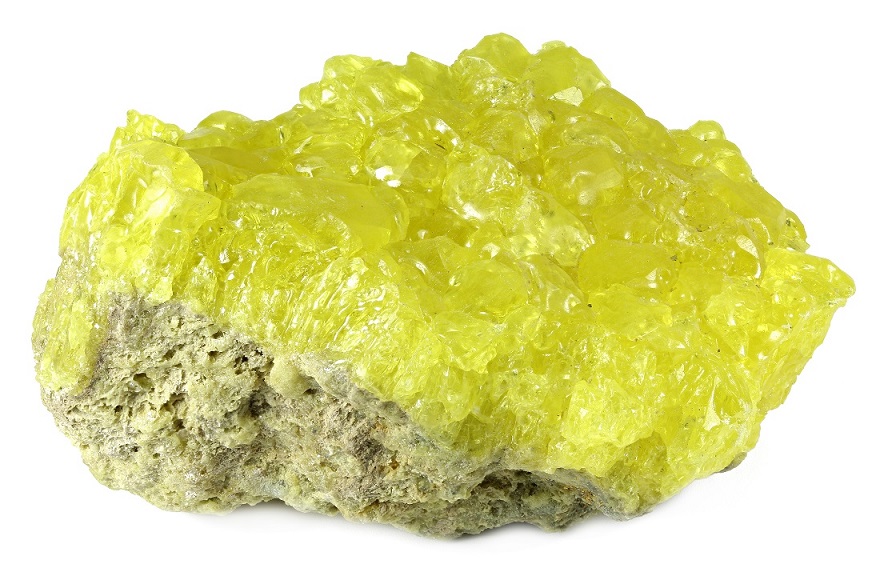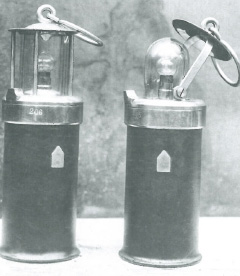Encompassing more than 3000 km2, Yuma Proving Ground is one of the largest military installations in the world. It is being operated by the US Army, but used by other branches of the military as well, even NASA tested their Orion spacecraft here. In July 2008, the facility hosted a similarly exotic vehicle, QinetiQ's Zephyr 6, a high-altitude UAV powered by solar cells, recharging batteries in daylight to stay aloft at night. One of the flights lasted an impressive 82 hours and 37 minutes, but an equally interesting part of the demonstration was the lithium-sulfur, or Li-S battery set which the aircraft carried.
The chemistry was first patented in 1962 by Herbert Danuta and Ulam Juliusz who used lithium as anodic material, sulfur on the cathode and an electrolyte containing aliphatic saturated amines. Shortly thereafter, they tried to improve the permittivity of the electrolyte by adding organic solvents such as propylene carbonate which is commonly found in Li-ion cells as well. This, however, also led to the irreversible formation of ethanol, methanol, ethylene glycol, and thiocarbonates as by-products.
The first Li-S cells could only be used as primary batteries anyway. In the late 1980s, the electrolyte was further modified by adding other solvents including dioxolane, and finally, the Li-S battery could have been recharged. However, major issues still had to be overcome. Due to its low conductivity, the sulfur cathode required a conducting agent which would also limit the expansion of the cathode during the conversion of sulfur into Li2S. Only in the early 2000s, researchers succeeded in embedding the sulfur active material into a carbon-rich polymer host, significantly increasing the stability of the cathode.
Ninety-nine problems, not just one
This made Li-S cells practical enough to be used at least in an experimental aircraft, but commercial applicability was still very far away. One of the issues was the inherent instability of the anode. As with Li-ion cells, during the first cycles, the electrolyte and the anode material react to form a passivation layer called solid electrolyte interphase (SEI). In Li-S cells, the lithium dissolution from the anode during discharge, and its electrodeposition on the anode surface while charging, induce over time a severe growth of the SEI.
This roughly a nanometer thick film plays a crucial role in the long-term cyclability of liquid electrolyte batteries by protecting the electrode from corrosion and preventing further consumption of electrolyte after the SEI has been established. At the same time, the thickness and porosity of the SEI must stay within a very narrow margin in order to maintain sufficient lithium ions conductivity through it. Adding to that, an uncontrolled expansion of the SEI in Li-S cells also generates sites on the anode where lithium dendrites can grow. This eventually causes an internal short circuit and the death of the battery itself.
Unfortunately, the cathode of Li-S cells is equally problematic. As already mentioned, when the sulfur in the cathode absorbs lithium, it expands. And not just slightly, but by almost 80 percent of the volume of the sulfur active material. This causes both a large mechanical stress on the cathode as well as it inhibits the flow of lithium ions. Both the dendritic growth on anode and the rapid degradation of the cathode are the main reasons for the short lifespan of Li-S cells which is barely half as long compared to Li-ion. Or at least it was, just two years or so ago.
Another issue associated with Li-S is the formation of lithium polysulfides (Li2Sx, 2 ≤ x ≤ 8) during the sulfur reduction on the cathode. Being highly soluble in most electrolytes, these compounds leak from the cathode and diffuse to the opposite electrode, where they are reduced to short chain polysulfides. When the reaction reverses, long-chain polysulfides are formed on the cathode, leading to an irreversible loss of active sulfur. This so-called shuttle effect occurs in rest state as well, the leakage of active material from the cathode and lithium corrosion on the anode thus being a continuous state.
Finally ready?
As partially mentioned earlier, researchers experimented with altering the cathode material including by using sulfurized carbon or otherwise different anode compositions. For instance, in 2021, a sugar-based anode additive was trialed which supposedly prevented the formation of polysulfide chains on the electrode surface. A year later, another team incorporated a network of aramid nanofibers between the electrodes. Somewhat similar to the membrane of a biological cell, this design significantly inhibited the polysulfide shuttle and the resulting dendrite formation.
Also in 2022, researchers developed a cathode made of carbon nanofibers which serve as a substrate for the active material to be deposited onto. There, sulfur forms its γ allotrope, a rare variety of the element which, thanks to its metastability, reacts with Li2S reversibly, without forming intermediate polysulfides. Until then, Li-S cells have been using ether-based electrolytes which acted on the polysulfide dissolution and contributed to stabilizing the SEI, but were rather impractical, not to say dangerous, due to their low flash and boiling points.
However, the solution based on the gamma-sulfur phase within carbon nanofibers allows for the usage of far less volatile carbonate electrolytes which otherwise would react adversely with the Li2sx. According to Pai et al. (2022), but other researchers as well, this design gives Li-S cells a lifespan of 4000 cycles without the formation of intermediate polysulfides, a figure well comparable to the performance of most Li-ion chemistries. The only drawback being that nanofibers make Li-S cells more costly, partially negating one of the advantages of this technology, i.e. the fact that sulfur as such is very cheap to obtain.
But at the end of the day, given the chemistry is stable enough for practical application, it is the capacity that matters most. Li-S cells boast a potential energy density of about 2600 Wh/kg, and although in practice this figure is significantly lower, rather 600 or so watt-hours per kilogram, it is still around twice as high as the energy density of most Li-ion cell types.
So far, all attempts at large-scale manufacturing of Li-S have failed or had never been heard of since, and this includes household names such as Airbus Space and Defense or Sony. But after six decades of development, the chemistry is approaching commercial maturity rather quickly. So maybe, if you stumbled upon this article a year or two after its publication, you're reading it on a smartphone with a battery that lasts a week thanks to Li-S chemistry.






